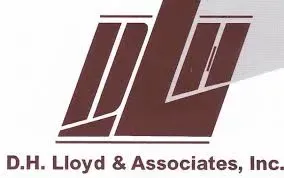Maryland Errors and Omissions Liability Insurance
See How We're Different:
Call Us: 202-223-1506
Top 3 Recommended Business Policies
Index
Understanding Errors and Omissions Liability Insurance
The Scope of Errors and Omissions Liability Insurance in Maryland
The Cost of Errors and Omissions Liability Insurance in Maryland
The Process of Getting Errors and Omissions Liability Insurance in Maryland
Handling Claims in Errors and Omissions Liability Insurance
Frequently Asked Questions about Errors and Omissions Liability Insurance in Maryland
Contact Us
Errors and omissions liability insurance, commonly referred to as E&O insurance, is a crucial product for professionals in various fields, including real estate, accounting, and consulting. This type of insurance provides protection against claims of inadequate work or negligent actions that result in client financial loss. Understanding its importance and nuances, especially in Maryland, can help professionals safeguard their careers and businesses effectively.
Understanding Errors and Omissions Liability Insurance
Errors and omissions liability insurance serves as a safety net for professionals who offer services or advice to clients. It covers legal costs and damages arising from claims made against them for alleged negligence, misrepresentation, or inadequate work. Since professionals often deal with sensitive information and complex transactions, having this insurance can be a crucial aspect of managing risk in their practice.
Definition and Importance of Errors and Omissions Liability Insurance
Errors and omissions liability insurance is designed to protect professionals from claims that their services were not performed adequately or that they failed to meet the standards expected of them. This can include a variety of allegations such as failing to deliver a service on time, providing incorrect advice, or making mistakes in paperwork. The importance of this insurance lies in its ability to cover legal defense costs, settlements, and any court awards, which can be exorbitantly high.
Moreover, in today’s litigious society, where clients may seek compensation for perceived failures, having E&O insurance not only protects professionals financially but also enhances their credibility. Clients are more likely to trust professionals who carry this insurance, knowing that there is a safety net for potential mistakes. This trust can lead to stronger client relationships and increased business opportunities, as professionals can confidently assure clients of their commitment to quality service and accountability.
Who Needs Errors and Omissions Liability Insurance?
Errors and omissions liability insurance is essential for various professionals who provide services or advice. This includes, but is not limited to:
- Real Estate Agents: They deal with high-value transactions and can be held liable for misrepresentations or failures to disclose relevant property information.
- Accountants: Errors in financial advice, tax filings, or audits can lead to significant financial losses for clients.
- Consultants: Businesses rely on consultants for key decisions; a failure to deliver can lead to client losses and claims.
- Lawyers: A missed deadline or failure to provide adequate legal advice can result in malpractice claims.
Essentially, anyone who provides professional advice or services is at risk of being accused of inadequate work and can benefit from having this protection. Additionally, industries like technology and healthcare are increasingly recognizing the necessity of E&O insurance. For instance, software developers can face claims for bugs or flaws in their products that lead to client losses, while healthcare professionals may be accused of negligence in patient care. As the landscape of professional services evolves, the scope of E&O insurance continues to expand, adapting to new risks and challenges faced by various sectors.
Furthermore, the process of obtaining errors and omissions liability insurance can vary significantly based on the profession and the specific risks involved. Professionals are often required to undergo a thorough assessment of their business practices and past claims history, which helps insurers determine the appropriate coverage limits and premiums. This evaluation not only aids in securing the right policy but also encourages professionals to reflect on their operational standards and
risk management strategies, ultimately fostering a culture of accountability and continuous improvement within their practices.

The Scope of Errors and Omissions Liability Insurance in Maryland
The scope of E&O insurance in Maryland reflects the unique legal and professional landscape of the state. Understanding what this insurance covers, along with its limitations, is vital for professionals operating within Maryland. This is particularly important in a state where various industries, from real estate to healthcare, have specific regulatory requirements and standards of practice that must be adhered to. The nuances of Maryland law can significantly impact the types of claims that may arise, making it essential for professionals to be well-versed in their insurance options.
Coverage Details of Errors and Omissions Liability Insurance
In Maryland, errors and omissions liability insurance typically covers claims related to negligence, errors in professional judgment, and failure to deliver services as promised. Coverage may extend to:
- Legal defense costs: Protects professionals against the expenses associated with defending against a claim.
- Settlements and judgments: Covers any settlements agreed upon or judgments awarded by the court.
- Claims made during the policy period: Most policies provide coverage for claims filed while the policy is effective, irrespective of when the alleged error occurred.
Understanding these coverage details ensures that professionals know what is and isn’t protected under their policy, allowing for better risk management. Additionally, many professionals in Maryland are required to carry E&O insurance as part of their licensing or regulatory obligations, which underscores the importance of selecting a policy that adequately meets both legal requirements and personal business needs. The right coverage can provide peace of mind, enabling professionals to focus on their work without the looming fear of potential legal repercussions.
Limitations and Exclusions of the Policy
While E&O insurance provides significant cover, it also has limitations and exclusions that professionals should be mindful of. Common exclusions include:
- Intentional wrongdoing: Claims stemming from fraud, or intentional misconduct are typically not covered.
- Employee actions: Some policies may not cover claims arising from actions taken by employees unless specifically included.
- Prior acts: Claims arising from issues that occurred before the policy was in effect may be excluded unless a retroactive date is included.
Professionals are encouraged to read their policies thoroughly and consult with insurance representatives to ensure they understand the extent of their coverage. It is also advisable to keep abreast of any changes in the legal landscape that could affect E&O coverage. For instance, the emergence of new technologies and practices in various fields may lead to new types of claims, necessitating updates to existing policies. Furthermore, professionals should consider additional endorsements or riders that can enhance their coverage, particularly in high-risk industries where the potential for claims is greater. This proactive approach can help mitigate risks and ensure that they are adequately protected against unforeseen circumstances.
The Cost of Errors and Omissions Liability Insurance in Maryland
The cost of E&O insurance can vary widely based on several factors, which makes it essential for professionals to understand how premiums are determined in Maryland.
Factors Influencing the Cost
Several key elements influence the cost of errors and omissions liability insurance:
- Type of profession: Higher risk professions typically pay more for coverage due to the nature of the services offered.
- Claims history: A history of previous claims can increase premiums as insurers view the individual or company as higher risk.
- Coverage limits: The level of coverage selected will directly affect the cost; higher limits generally result in higher premiums.
- Business size and revenue: Larger businesses or those with higher revenue may face higher costs due to the potential for larger claims.
Understanding these factors can help professionals prepare for the financial commitment associated with obtaining E&O insurance. Additionally, the specific industry regulations and standards in Maryland can play a significant role in shaping the insurance landscape. For instance, professionals in fields such as healthcare, legal services, and financial advising may face stricter requirements and higher premiums due to the sensitive nature of their work and the potential for significant financial repercussions stemming from errors.
Ways to Lower Your Insurance Premium
While the cost of errors and omissions liability insurance can seem daunting, there are strategies that professionals can employ to help reduce their premiums:
- Increase the deductible: Opting for a higher deductible can lower the cost of the premium.
- Implement risk management practices: By demonstrating effective risk management procedures, professionals may negotiate lower rates.
- Bundle policies: Purchasing E&O insurance alongside other types of insurance (e.g., general liability) can often result in discounts.
These strategies can make E&O coverage more affordable while still providing necessary protection. Moreover, staying informed about industry trends and changes in regulations can also help professionals better position themselves when negotiating with insurers. Engaging in continuous education and training can not only enhance service quality but also serve as a testament to a commitment to minimizing risks, which insurers often view favorably. Furthermore, maintaining an updated portfolio of client testimonials and case studies can help establish credibility and demonstrate a solid track record, potentially leading to more favorable premium rates.
The Process of Getting Errors and Omissions Liability Insurance in Maryland
Acquiring errors and omissions liability insurance in Maryland involves several steps that professionals should be aware of to ensure they secure the right coverage efficiently.
Steps to Apply for Errors and Omissions Liability Insurance
The application process for E&O insurance typically involves the following steps:
- Assess your needs: Evaluate your specific risks and requirements based on your profession.
- Research providers: Look for insurance companies that offer E&O coverage tailored to your field.
- Gather necessary documentation: Prepare financial statements, claims history, and any relevant professional licenses.
- Submit applications: Complete applications for multiple insurers to compare coverage options and premiums.
By following these steps, professionals can simplify the process of obtaining E&O insurance. Additionally, it's beneficial to consult with a knowledgeable insurance broker who can provide insights into the nuances of different policies and help navigate the complexities of the insurance market. Brokers often have access to a broader range of options and can negotiate terms that might not be readily available to individual applicants.
Understanding the Underwriting Process
Once applications have been submitted, they enter the underwriting phase, which involves an insurer assessing the risk associated with providing coverage. During this phase, underwriters will review the submitted information, analyze claims history, and evaluate the individual’s or company's risk management practices.
It is essential for applicants to be honest and thorough in their submissions, as any discrepancies can lead to higher premiums or even denial of coverage. Professionals should remain engaged with their insurers during this process to ensure they understand the outcomes and any policy stipulations that may arise. Furthermore, applicants should be prepared for follow-up questions or requests for additional information, as underwriters may seek clarification on specific aspects of the business or its operations. This dialogue can be crucial in demonstrating the applicant’s commitment to risk management and may positively influence the terms of the policy offered.
Moreover, understanding the common factors that influence underwriting decisions can empower professionals to make informed choices. Elements such as the size of the business, the nature of services provided, and the industry’s overall risk profile can significantly impact the underwriting process. By proactively addressing potential concerns and showcasing a robust risk management strategy, applicants can position themselves favorably in the eyes of insurers, potentially leading to more favorable coverage terms and pricing.

Handling Claims in Errors and Omissions Liability Insurance
Navigating the claims process effectively is as important as securing errors and omissions liability insurance. Professionals need to know how to report claims and what role the insurance company plays in this process.
Reporting a Claim
Reporting a claim typically starts with notifying the insurance company as soon as a claim arises. This can be done through a phone call, an online portal, or by submitting a formal claims form. It’s vital to provide as much information as possible, including the details of the claim, supporting documents, and any relevant communications.
Delaying notification can lead to complications in claim processing, as insurers often require timely reporting to facilitate investigations and defense actions. Additionally, maintaining a clear record of all communications related to the claim can be invaluable. This includes emails, letters, and notes from phone calls, which can serve as evidence of your diligence and responsiveness during the claims process.
The Role of the Insurance Company in Claims Handling
Once a claim is reported, the insurance company will assign a claims adjuster who will investigate the situation. Their responsibilities include:
- Evaluating the claim: They assess the validity of the claim and determine whether it falls within the policy’s coverage.
- Communicating with all parties: The adjuster acts as a liaison between the insured, the claimant, and any affected third parties.
- Negotiating settlements: If the claim is valid, the adjuster will help negotiate a settlement or proceed with legal defense if necessary.
Understanding the role of the insurance company in claims handling allows professionals to be better prepared in the event of a claim against them. Moreover, it's essential for insured professionals to actively engage with the claims adjuster throughout the process. This engagement can help clarify any misunderstandings and ensure that all necessary information is shared promptly. Regular follow-ups can also keep the claim moving forward and demonstrate your commitment to resolving the issue efficiently.
Furthermore, professionals should familiarize themselves with their policy's specific terms and conditions, as this knowledge can empower them during the claims process. Each policy may have unique stipulations regarding coverage limits, exclusions, and the types of claims that are eligible for coverage. Being well-versed in these details not only aids in effective communication with the insurance company but also helps in setting realistic expectations regarding the outcome of the claim.
Frequently Asked Questions about Errors and Omissions Liability Insurance in Maryland
Errors and omissions liability insurance can be complex, and it is common for professionals to have questions regarding its nuances and coverage specifics.
Common Misconceptions about Errors and Omissions Liability Insurance
Several misconceptions surround E&O insurance that can lead to confusion:
- “I don't need E&O insurance if I’m careful.” Many believe that being cautious will eliminate all risks; however, even the most diligent professionals can accidentally make mistakes.
- “It doesn’t cover most claims.” While it might not cover intentional wrongdoings, E&O insurance provides significant coverage for unintentional errors.
- “All policies are the same.” In reality, coverage details can vary considerably between insurers, emphasizing the need for thorough research.
Addressing these myths can help professionals make informed decisions regarding their insurance needs.
Essential Tips for Policyholders
For professionals looking to maximize their errors and omissions liability insurance, here are some essential tips:
- Regularly review your policy: Ensure your E&O coverage aligns with your current professional activities and risks.
- Maintain thorough documentation: Keep meticulous records of transactions and communications with clients to support your case in the event of a claim.
- Consult with insurance experts: Engaging with insurance professionals can provide insights into the best coverage options tailored to your needs.
By following these guidelines, policyholders can enhance their insurance strategy and ensure they are well-protected in their professional endeavors.
For over 40 years D.H. Lloyd & Associates has provided commercial insurance solutions covering multiple facet of business risk.
QUICK LINKS
CONTACT US
Phone:
202-223-1506
Email: contactus@dhlloyd.com
Address: 1625 K St NW, Washington, DC 20006, United States
All Rights Reserved | D.H. Lloyd & Associates | Privacy Policy | Legal Disclaimer | Sitemap | Built & SEO'd by Convirtue

